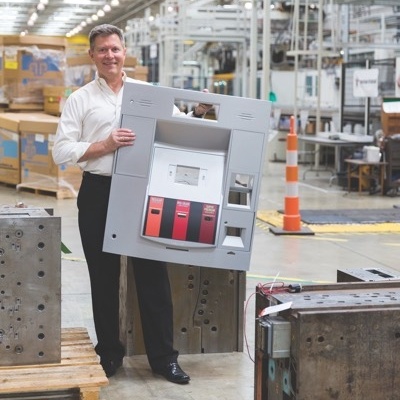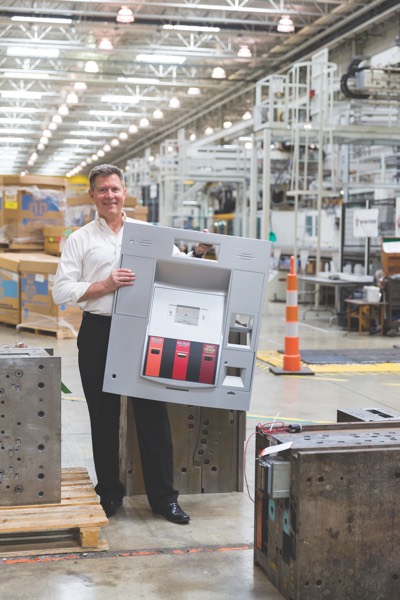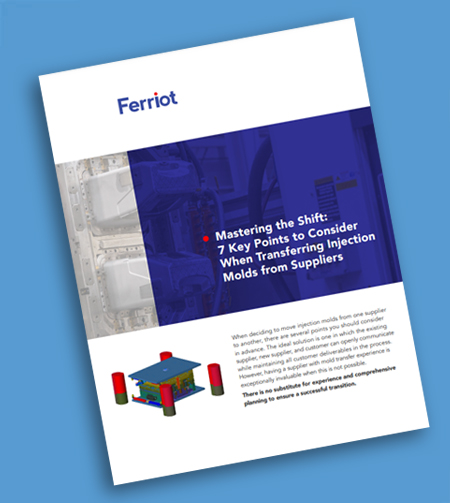Structural foam molding offers an alternative to traditional injection molding.

Here at Ferriot, we are proud to be a leader in thermoplastic injection molding since the 1940s. Our clients turn to us for professional assistance with contract manufacturing, custom injection molding, painting, and assembly. Structural foam is one of several injection molding processes we offer.
Traditional injection molding is typically done in two stages. There’s an injection stage where melted thermoplastic is injected into a mold, and a packing stage where pressure is built and the plastic is formed into the shape of the mold. In structural foam molding, the injection stage is basically the same, but the packing stage is augmented by a chemical blowing agent mixed with the material. That chemical blowing agent is triggered by heat and expands the material by creating a microcellular structure to form the part against the mold.
A part made using structural foam molding offers a number of advantages. They generally weigh less and aren’t as dense as similar parts manufactured using other processes. This is the end result of the blowing agent which, essentially, creates a thermoplastic foam within the mold. Actual weight savings can vary, but parts made using structural foam molding can be as much as 10% – 30% lighter than other parts, while retaining durability.
This process also scales well, allowing large or bulky parts to be manufactured while still retaining the superior production speed offered by injection molding. Structural foam parts can be finished by methods typically used for other plastics. The surface of a finished part is smooth offering the potential of easy cleaning, and can be painted over.
An additional benefit to parts manufactured using this process is part durability. As a result of the difference in process, parts have excellent stiffness-to-weight ratio.
We’ve been busy putting structural foam molding through its paces to manufacture a variety of parts, including a gasoline dispenser front facia for use at filling stations and the results have been everything we could have hoped for. Along with the durability offered by the new parts, the material options available for structural foam molding also means a finished product can be chemical resistant, offer electrical or thermal insulation, and can be developed for outdoor applications.
Think this might be an alternative solution for you? We encourage you to contact us to discover how Ferriot can benefit your business.




